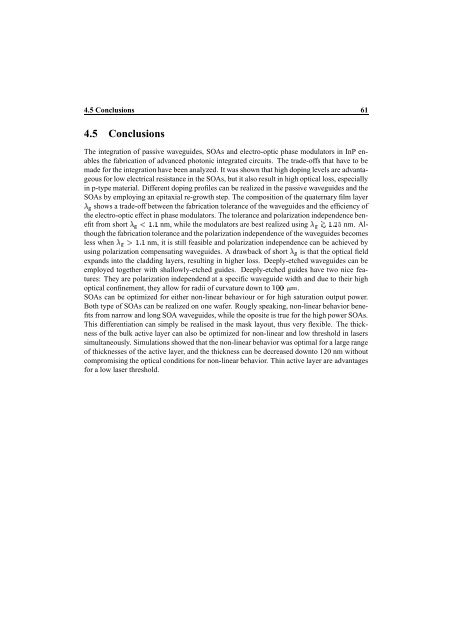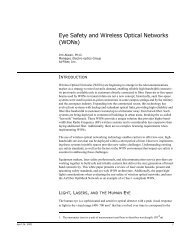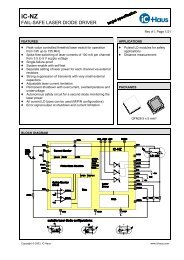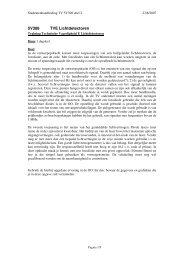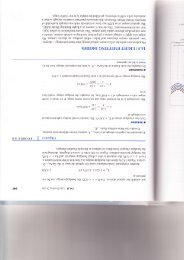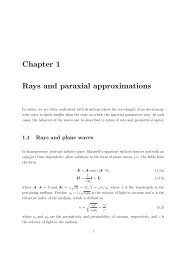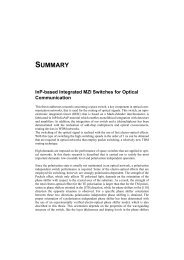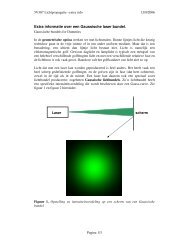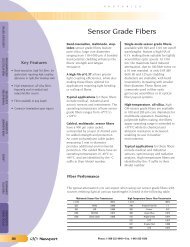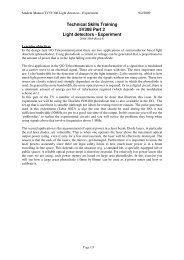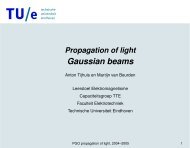A Wavelength Converter Integrated with a Discretely Tunable Laser ...
A Wavelength Converter Integrated with a Discretely Tunable Laser ...
A Wavelength Converter Integrated with a Discretely Tunable Laser ...
Create successful ePaper yourself
Turn your PDF publications into a flip-book with our unique Google optimized e-Paper software.
4.5 Conclusions 61<br />
4.5 Conclusions<br />
The integration of passive waveguides, SOAs and electro-optic phase modulators in InP enables<br />
the fabrication of advanced photonic integrated circuits. The trade-offs that have to be<br />
made for the integration have been analyzed. It was shown that high doping levels are advantageous<br />
for low electrical resistance in the SOAs, but it also result in high optical loss, especially<br />
in p-type material. Different doping profiles can be realized in the passive waveguides and the<br />
SOAs by employing an epitaxial re-growth step. The composition of the quaternary film layer<br />
shows a trade-off between the fabrication tolerance of the waveguides and the efficiency of<br />
<br />
the electro-optic effect in phase modulators. The tolerance and polarization independence ben-<br />
efit from £ ¤ ¤ short nm, while the modulators are best realized ¤¨ using nm. Although<br />
the fabrication tolerance and the polarization independence of the waveguides becomes<br />
less ¤¤ when nm, it is still feasible and polarization independence can be achieved by<br />
using polarization compensating waveguides. A drawback of short is that the optical field<br />
expands into the cladding layers, resulting in higher loss. Deeply-etched waveguides can be<br />
employed together <strong>with</strong> shallowly-etched guides. Deeply-etched guides have two nice features:<br />
They are polarization independend at a specific waveguide width and due to their high<br />
optical confinement, they allow for radii of curvature down ¤ to .<br />
SOAs can be optimized for either non-linear behaviour or for high saturation output power.<br />
Both type of SOAs can be realized on one wafer. Rougly speaking, non-linear behavior benefits<br />
from narrow and long SOA waveguides, while the oposite is true for the high power SOAs.<br />
This differentiation can simply be realised in the mask layout, thus very flexible. The thickness<br />
of the bulk active layer can also be optimized for non-linear and low threshold in lasers<br />
simultaneously. Simulations showed that the non-linear behavior was optimal for a large range<br />
of thicknesses of the active layer, and the thickness can be decreased downto 120 nm <strong>with</strong>out<br />
compromising the optical conditions for non-linear behavior. Thin active layer are advantages<br />
for a low laser threshold.


